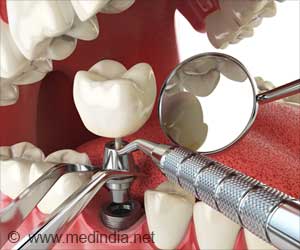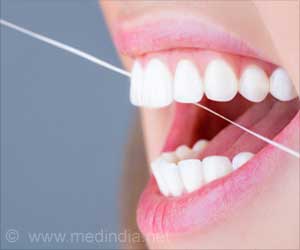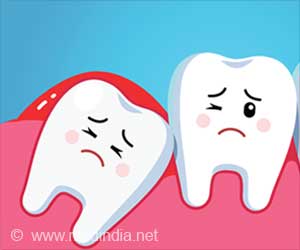The mechanical coupling between the collagen protein fibers and mineral nanoparticles which renders dentin capable of withstanding extreme forces.

‘The mechanical coupling between the collagen protein fibers and mineral nanoparticles makes dentin the most durable biological materials in the human body.’





Measurements performed at BESSYII, the Helmholtz-Zentrum Berlin’s synchrotron radiation source, showed that it is the mechanical coupling between the collagen protein fibers and mineral nanoparticles which renders dentin capable of withstanding extreme forces. Results from this research have been recently published in the journal Chemistry of Materials. The secret to the marked toughness of dentin lies in the structural details. Dentin is a bone-like substance, which is composed of mineral nanoparticles, collagen and water. While both enamel and dentine are composed of the same mineral called carbonated hydroxyapatite (cHAP), dentin represents a complex nanocomposite material. It consists of inorganic cHAP nanoparticles embedded in an organic matrix of collagen protein fibers. A group of researchers, led by Dr. Jean-Baptiste Forien and Dr. Paul Zaslansky had previously shown that residual stress in dentin contributes to the high load-bearing capacity of this biological structure.
Compression stress found within the material can explain why damage or cracks in enamel do not extend catastrophically into the dentin bulk. As part of the new findings, Dr. Zaslansky’s team used samples of human teeth to measure how nanoparticles and collagen fibers interact under humidity-driven stress. "It was the first time we succeeded in precisely determining not only the lattice parameters of the cHAP crystals contained within the nanoparticles, but also the spatially-varying size of the nanoparticles themselves. This also allowed us to establish the degree of stress they are generally able to withstand," says Zaslansky.
In order to gain insights into the performance of the nanostructures involved, the researchers used both laboratory experiments and measurements obtained using the Helmholtz-Zentrum Berlin’s synchrotron radiation source BESSY II, a device that produces radiation frequencies ranging from terahertz to hard X-rays.
As part of their experiments, the researchers increased the compressive stress inside the dentin samples. The samples were also dried by heating them to 125 degree celcius. This resulted in the collagen fibers shrinking, leading to huge stress being exerted on the nanoparticles. The ability to withstand forces of up to 300 MPa is equivalent to the yield strength of construction grade steel, and is comparable to 15 times the pressure exerted during mastication of hard food, which usually remains well below 20 MPa. Heat treatment did not lead to the destruction of the protein fibers, suggesting that the mineral nanoparticles also have a protective effect on collagen.
Advertisement
Such a design could be used as a model system for new materials development, for example when designing novel dental restoration materials. "Dentin’s morphology is considerably more complex than we expected. Enamel is very strong, but also brittle. In contrast, the organic fibers found in dentin appear to exert exactly the right pressure on the mineral nanoparticles that is required to increase the material’s repetitive, cyclic load-bearing capacity," argue the scientists. At least, this is the case as long as the tooth remains intact.
Advertisement
Source-Eurekalert









